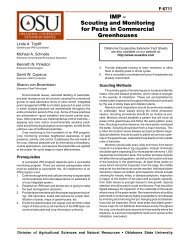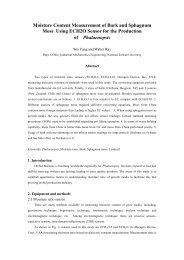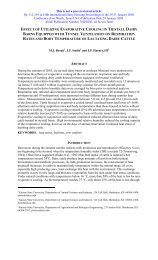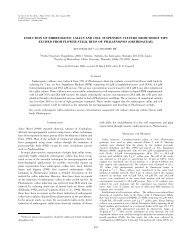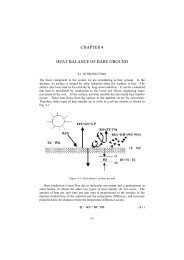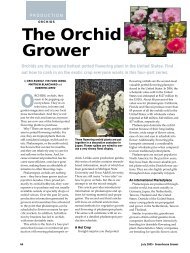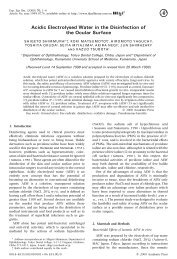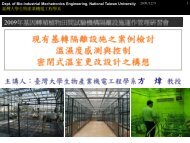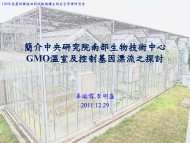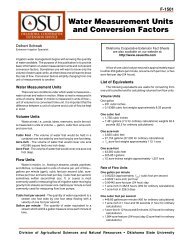Review on thermal energy storage with phase change: materials ...
Review on thermal energy storage with phase change: materials ...
Review on thermal energy storage with phase change: materials ...
- No tags were found...
You also want an ePaper? Increase the reach of your titles
YUMPU automatically turns print PDFs into web optimized ePapers that Google loves.
B. Zalba et al. / Applied Thermal Engineering 23 (2003) 251–283 265boundary, so that the positi<strong>on</strong> of the boundary is not known a priori and forms part of thesoluti<strong>on</strong>.A review <strong>on</strong> analytical/numerical and experimental work in the area of <strong>phase</strong> <strong>change</strong>, specificallyfreezing and melting processes was carried out by Eckert et al. in 1994 [67]. They divided thereview in melting and freezing of spheres, cylinders and slabs; Stefan problems; ice formati<strong>on</strong> inporous <strong>materials</strong>; c<strong>on</strong>tact melting; and solidificati<strong>on</strong> during casting.When the substance that solidifies is pure, the solidificati<strong>on</strong> occurs at a single temperature,while in the opposite case (<strong>with</strong> mixtures, alloys and impure <strong>materials</strong>) the solidificati<strong>on</strong> takesplace over a range of temperatures, and therefore there appears a two-<strong>phase</strong> z<strong>on</strong>e (a ‘‘mushyregi<strong>on</strong>’’) between the solid and liquid z<strong>on</strong>es. In this latter case, it is appropriate to c<strong>on</strong>sider the<strong>energy</strong> equati<strong>on</strong> in terms of enthalpy which, if the advective movements in the inner of the liquidare disregarded, is expressed mathematically as:q ohot ¼ ~rðk ~rT ÞThe soluti<strong>on</strong> of this equati<strong>on</strong> obviously requires knowledge of the enthalpy–temperature functi<strong>on</strong>aldependency, which for an impure substance is as shown in Fig. 3. Similarly, it is necessaryto know the functi<strong>on</strong> relating the <strong>thermal</strong> c<strong>on</strong>ductivity and the temperature.The main advantages of this procedure are:• The equati<strong>on</strong> is directly applicable to the three <strong>phase</strong>s.• The temperature is determined at each point and the value of the thermophysical properties canbe evaluated.• Finally, according to the temperature field, it is possible to ascertain the positi<strong>on</strong> of the twoboundaries if so desired, although as indicated above this is not necessary.Fig. 3. Enthalpy variati<strong>on</strong> <strong>with</strong> temperature.



